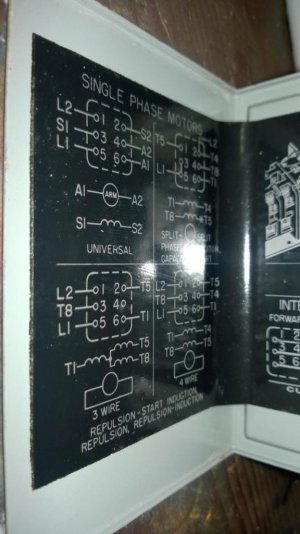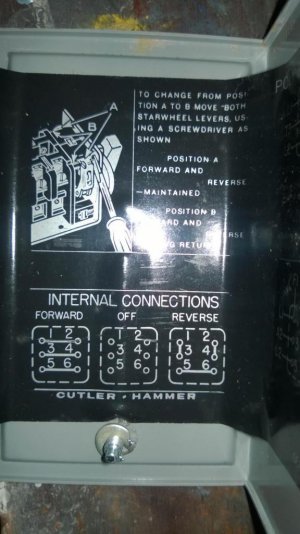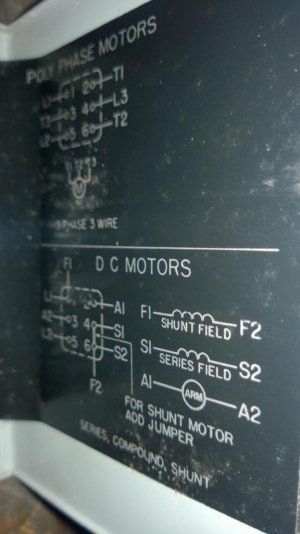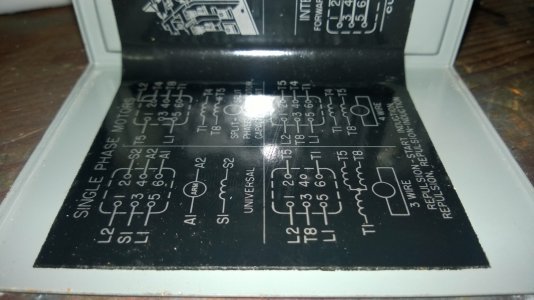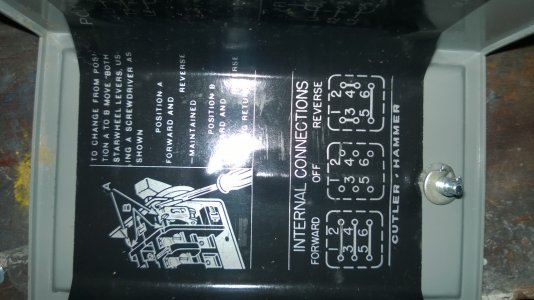The wiring schematic in your first post was from my thread here:
http://www.hobby-machinist.com/show...n-a-120V-split-phase-motor-with-a-drum-switch
It's not going to do you a whole lot of good because these motors are different, but the description in my last post might help because it describes what's going on between the switch and the motor.
Ok, you have me confused. :thinking:
What do you mean by high/low? My motor has one speed with forward and reverse. I assume the high/low on your motor is 120V/220V. What is the manufacturer/part number of the motor?
The switch doesn't care how many phases you are using, it's just a 3PDT switch with some jumpers to switch the starter leads around. The main thing is that if you are using 220V, you can't use the stock switch to safely reverse the motor because it doesn't have enough poles, assuming you have a C-H switch like mine. Anyway, for a normal 120V installation your old switch should work fine.
Also, you might want to just get the lathe running in one direction and worry about reverse later? That should be easy to accomplish, basically like wiring a light switch. As long as you have the other wires already run in the conduit, you can come back for reverse later without any difficulty. I ran my lathe for months before I felt I needed to get reverse working.
I have to ask, why did you pitch the working motor that came with the lathe? :whistle:

